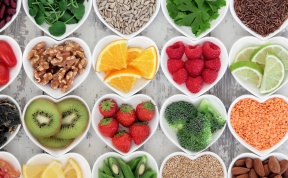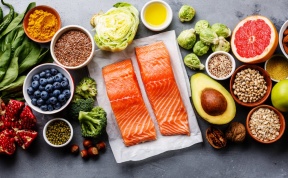
Eat well for a long and healthy life – that’s a mantra that we’re all familiar with, but what are the best foods to help us achieve that goal? In this article, we give you an overview of some of the most healthful and nutritious foods. Official figures indicate that, currently, the top three countries in the world with the highest life expectancy are the Principality of Monaco, Japan, and Singapore. These are places where the inhabitants experience a high quality of life, and an important element of that is eating healthful meals. Often, we find praise for “superfoods” in the media – foods so high in nutritional value that they are seen as dietary superheroes. Nutritionists reject the term “superfoods” as a buzzword that can influence people to place too high an expectation on a limited range of foods when, in reality, a balanced diet and healthful lifestyle require more effort than eating your five-a-day. Still, there are certain foods that are more nutritious than others, and many that, as research has shown, have a protective effect against a range of diseases. Here, we give you an overview of some of the best foods that you may want to consider including in your diet in your quest for a happy, healthy life.
Edamame (soybeans)
Edamame, or fresh soybeans, have been a staple of Asian cuisine for generations, but they have also been gaining popularity on the Western front of late. Soybeans are often sold in snack packs, but they are also added to a varied range of dishes, from soups to rice-based meals, though they are served as cooked and seasoned on their own, too. The beans are rich in isoflavones, a type of phytoestrogen – that is. plant-derived, estrogen-like substances. Isoflavones are known to have anti-inflammatory, antioxidant, anti-cancer, and antimicrobial properties.
Carrots
 This common culinary ingredient, best known in its orange variety, is famously recommended for its high content of beta-carotene, a pigment — and carotenoid — that gives the widespread version of this root vegetable its color. Beta-carotene can be converted by our bodies into vitamin A, which, according to the National Institutes of Health (NIH), “is involved in immune function, vision, reproduction, and cellular communication.” Our bodies cannot produce vitamin A on their own, so it must be derived from our diet.
This common culinary ingredient, best known in its orange variety, is famously recommended for its high content of beta-carotene, a pigment — and carotenoid — that gives the widespread version of this root vegetable its color. Beta-carotene can be converted by our bodies into vitamin A, which, according to the National Institutes of Health (NIH), “is involved in immune function, vision, reproduction, and cellular communication.” Our bodies cannot produce vitamin A on their own, so it must be derived from our diet.
Cruciferous vegetables
Another important type of food on our list are cruciferous vegetables — also known as “Brassica vegetables” — which include a wide array of green foods, such as cabbage, broccoli, Brussels sprouts, cauliflower, bok choy, radish, and kale. These vegetables boast an especially rich nutrient content, including many vitamins (C, E, K, and folate), minerals (potassium, calcium, and selenium), and carotenoids (lutein, beta-carotene, and zeaxanthin).








